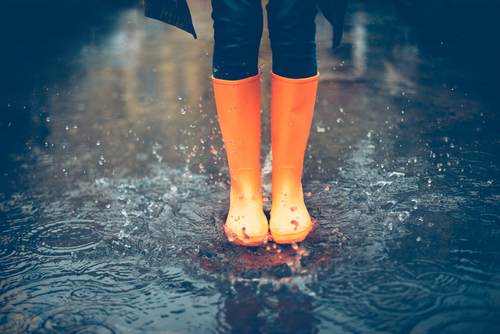How Do I Know Where My Surface Water Drains To?
If you are a property owner, you may not think about your drainage system until there is a problem with it. Still, if such a problem does arise – or, if you need to know about the location of the drainage system on your property because you are carrying out work or building an extension – it is important to know how to find this information. If you find yourself asking questions like: “How do I know where my surface water drains to?”, “What is a soakaway?” or “What is the difference between foul and surface water drainage?”, then the experts at Lanes are here to help.
At Lanes, we have significant experience in finding, mapping and maintaining private drainage systems, so we are aware of the most common ways to find the drainage points on your property and can advise you on how to find them should the need arise. In this blog, we will detail a number of methods you can use, so even if one approach is not suitable, you can still find out where your surface water drains.
The DIY approach
One way to find out where your surface water drains away to is to watch it and see where it flows to, whether following a period of heavy rain or after you have watered your garden or washed your car. In all of these cases, surface water will gather and needs to drain away, and by following the current of the water you should be able to find the point at which it drains.
Most private properties are connected to sewer systems maintained by local water authorities and this is the most common point of drainage for surface water. If surface water on your property drains into the sewers, you will pay a charge for this service as part of your water bill.
The other possibility is that your property has a soakaway. This is a pit dug somewhere into the ground on your property and filled with stone or plastic that soaks up excess surface water and redistributes it, or enables it to soak into the ground. If none of this water enters the sewers, you will not be charged by your water authority, but if any proportion of it does, you will still need to pay a charge.
If there is no rain, you can create standing water with a hosepipe, although this can be costly and wasteful, and is not the most effective solution. Usually, the most important reason that you will need to know where surface water drains to is because there is a problem, such as water not draining away properly. If you need to use a hosepipe to find the location of your surface water drainage system, this suggests that there is not an urgent problem and you should find another way to achieve this.

Check with authorities
You can sometimes check by reviewing the deeds to your property, and if there is a problem with your drainage system this might be the best place to start – although, if you are experiencing serious symptoms of a problem, you should call a specialist drainage engineer at the earliest opportunity.
This is most common when surface water is not draining away properly. This might be a minor symptom – for example, if your garden remains waterlogged long after heavy rain – or something more serious, like frequent flooding. Any of these can be a sign that there is a problem within your drainage system, or that your property does not have sufficient surface water drainage built into it, and it is important to react quickly in case the problem gets worse.
Reviewing the deeds to your property will usually identify the locations of any drainage points. However, it can be difficult to understand your drainage system from your property deeds because they may not have as much information as you need. Your local water authority should also have a map of your drainage system, but these documents can also be inconsistent in terms of detail. If you need a more detailed map of your drainage system, it is usually best to have a professional drainage expert conduct a CCTV drain survey.
How does surface water differ from foul water drainage?
Most properties have two types of drainage – surface water and foul drainage. Surface water drainage refers to rainwater and other types of water that can gather on outside surfaces and need to be drained away – this can also include melted snow or ice, or water from a hosepipe.
In contrast, foul water drains away from sinks and utilities in the home. They need to be separated because surface water is not generally contaminated with chemicals or other products in the way that foul water frequently is, and foul water must be carefully treated before it can be released back into the environment.
If you are experiencing problems with surface water drainage, or you need a detailed map of the drainage system beneath your property, speak to the experts at Lanes Group. You can call us 24 hours a day on 0800 526 488, or use the enquiry form on this page to tell us about your problem.







